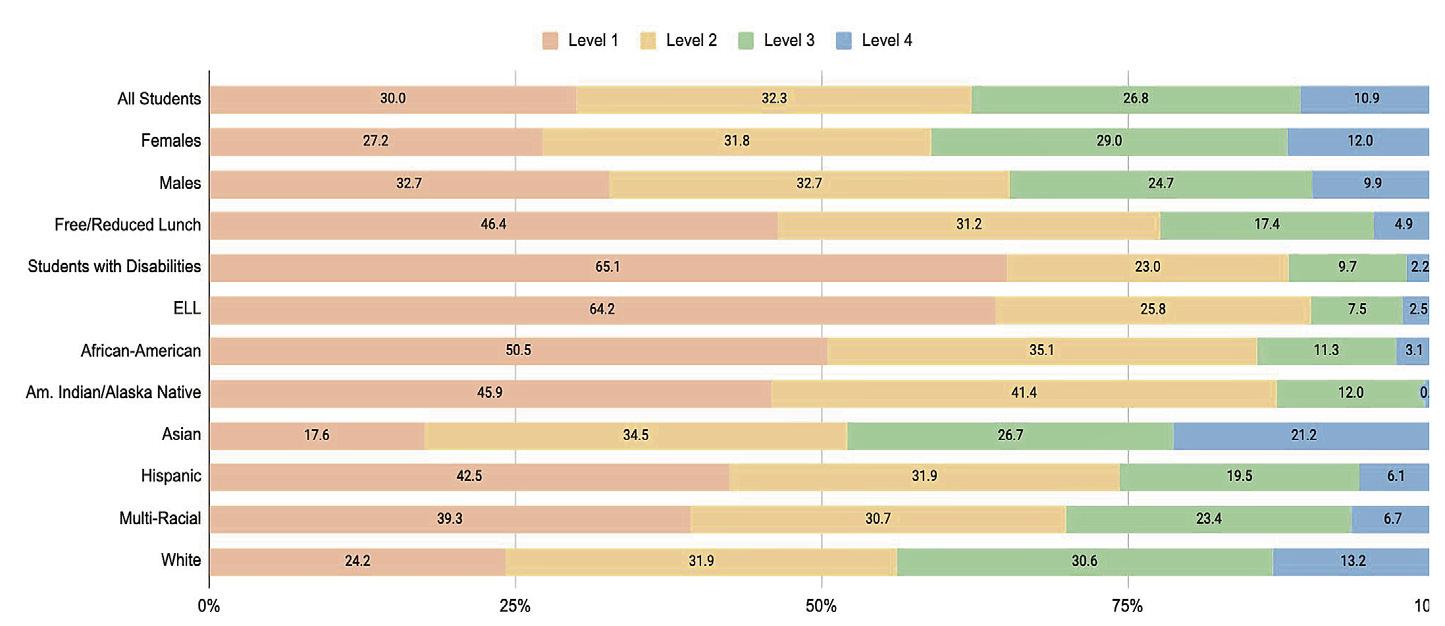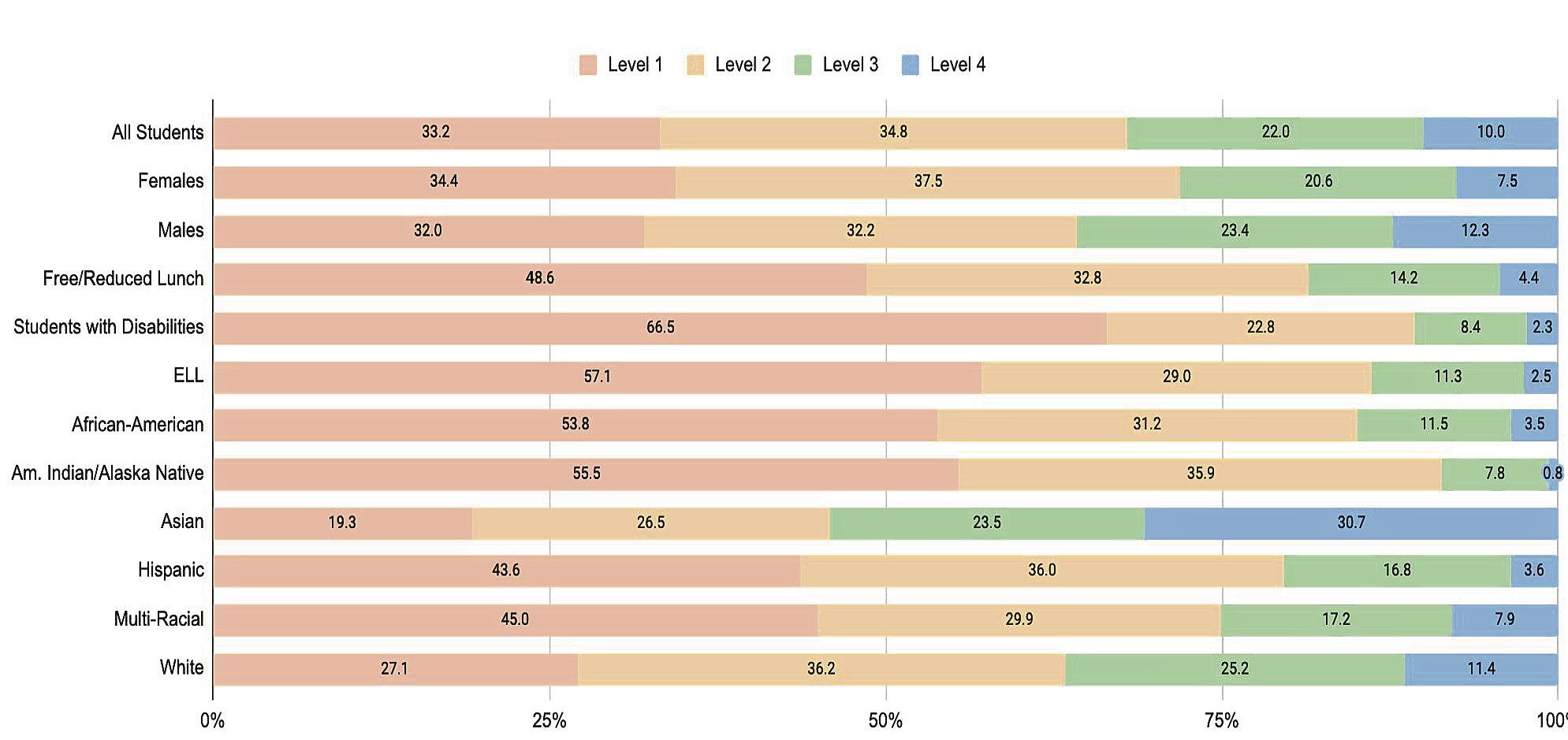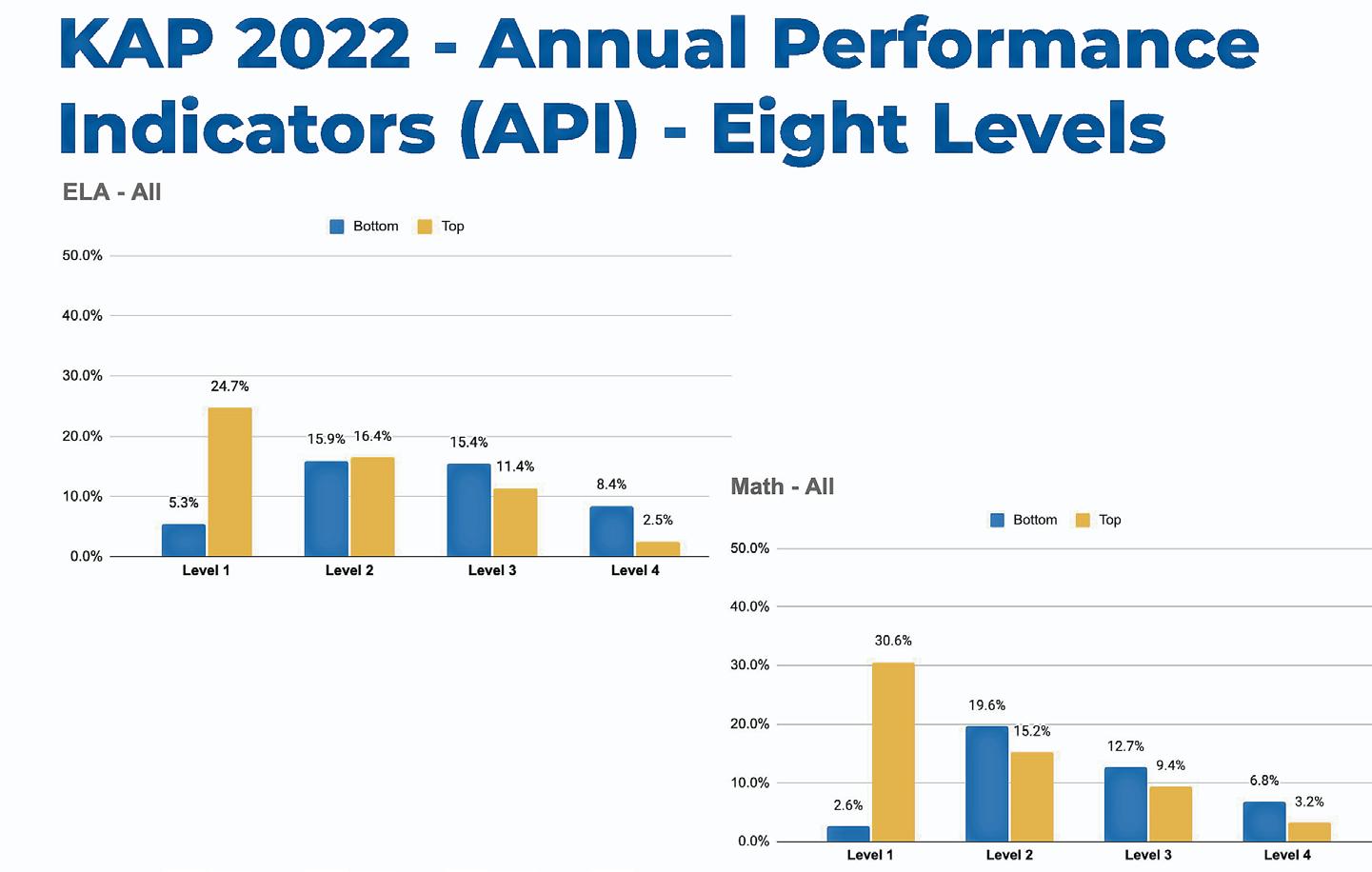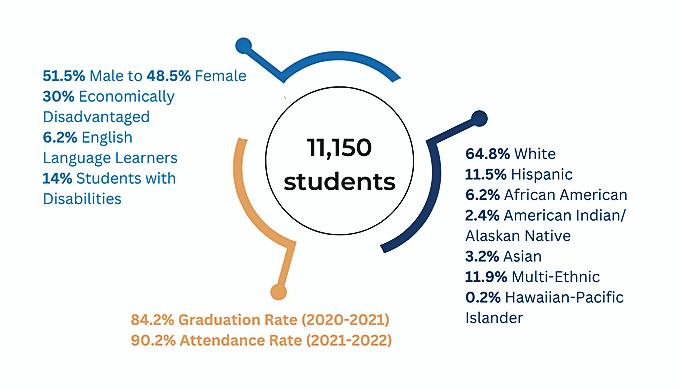
5 minute read
Student-Centered Learning
Moving from Courageous Conversations to Action
Lawrence Public Schools has more work to do to meet its strategic plan promise to ensure that students of all races, backgrounds, and abilities achieve at high levels, demonstrate proficiency in reading by third grade and in math by eighth grade, and graduate on time prepared for success in college and careers. By analyzing student achievement data, including annual state assessments and first-quarter district interim assessments; student attendance records, and student behavior reports and screening data, our school community has a renewed focus, and a sense of urgency, toward our continued work with students, families, and community partners around school improvement.
Advertisement
Centering Educational Equity

Executive Director of Inclusion, Engagement, and Belonging Dr. Cynthia Johnson said that using the school board’s Equity Policy as a guidepost, each school will center educational equity by implementing a Closing the Access, Opportunity, and Achievement Gap Framework. She says that the framework focuses on seven essential questions requiring action: 1) What does the data show about how we are educating marginalized populations? 2) Who are the marginalized students in your school (by name, race, grade, parent/ guardian)? 3) What does the data show about the achievement of each marginalized student? 4) What does the data show about the attendance rate of each marginalized student? 5) What does the data show about the behavior of each marginalized student? 6) What instructional changes are necessary to improve the learning of each marginalized student? 7) What supports are necessary to promote healthy development and excitement about learning to move our marginalized students?
Kansas Assessment Program (KAP) Access, Representation, Participation, and Outcomes ENGLISH LANGUAGE ARTS RESULTS BY SUBGROUP

MATH RESULTS BY SUBGROUP
Board Policy defines Educational Equity as “When educational policies, practices, interactions, and resources are representative of, constructed by, and responsive to all people so that each individual has access to meaningfully participates in, and has positive outcomes from high-quality learning experiences, regardless of individual characteristics and group membership (Fraser, 2008, Great Lakes Equity Center, 2012, p.2).”
Johnson said that school principals, Equity Teams, and Building Leadership Teams will respond to the framework’s seven essential questions and lead necessary changes and adjustments within their schools. Building Support Teams observe and collect data during regular school visits with principals, and district and building administrators and Building Leadership Teams monitor progress during building goal check-ins.
Data-Informed Decisions

The Kansas State Department of Education (KSDE) used longitudinal data to determine that students performing in the top half of Level 2 or higher on the Kansas Assessment Program (KAP) graduate and achieve postsecondary success. It uses KAP Performance Level Descriptors to indicate whether a student shows a Level 1 - limited, Level 2 - basic, Level 3 - effective, or Level 4 – excellent ability to understand and use the skills and knowledge needed for postsecondary readiness.
Of the Lawrence students that participated in the KAP in 2021-2022, 54.1% and 47.3% scored at the top of Level 2 or higher in English language arts and math, respectively. Identified subgroups comprised of Students with Disabilities, English Language Learners, Students of Color, and Students Qualifying for Free/ReducedPrice Lunches were disproportionately represented at Levels 1 and 2.
“It is important to not only look at the achievement gap, but also the access and opportunity gaps by
looking at disproportionalities. I believe that we have the power to lift every single student to another level,” said Johnson.
USD 497’s Director of Data and Assessment, Dr. Jana Craig-Hare, said that the district started using interim assessments aligned with state curriculum standards this year to help predict students’ future performance on the KAP. The results of these formative assessments inform educators’ instructional decisions by enabling the evaluation of students’ knowledge and skills relative to a specific set of academic goals. Schools began sharing interim assessment reports with families during conferences last month.
Barriers to Learning
Last month Craig-Hare reported to the board additional data illustrating barriers to student learning, including chronic absenteeism and student behavior/disciplinary incidents during the first quarter of the school year. These include: • 92.5%: Average Daily Attendance • 24.7%: Rate of Chronic Absenteeism, defined as missing 10% or more of school days for any reason • 1,018: Student Behavior/ Discipline Incidents (492 students) • 155: In-School Suspensions (137 students) • 318: Out-of-School Suspensions (231 students) • 612: Student Behavior Incidents Involving the use of Restorative Practices • 38.2%: Percent of Behavior Incidents in which Restorative Practices Prevented Suspensions.
“Our learning issues primarily are from students missing foundational skills,” said Lead Elementary Principal Jackie Mickel of Langston Hughes school. She cited among changes in practice needed: structured literacy, continual and rigorous professional development, high quality Tier 1 (foundational) instruction for all students, scheduled intervention blocks, and supports to promote students’ healthy development and school connectedness.
Lead and West Middle School Principal Dr. Quentin Rials said that the data shows a need for the district’s equity work to continue and remain a priority. “We don’t want to lower the bar. We want to keep that bar high and scaffold our instruction. We need to make sure we take ‘temperature checks,’ so we don’t get all the way through a unit before finding out students aren’t successful. If we don’t know where kids are, we don’t know how to help them,” he said.
Speaking on behalf of the high schools, College and Career Center/ Academy and Lead Principal Dr. Bill DeWitt said that schools have begun sharing assessment data with student affinity groups, such as Black Student Union, Latin American Studies Student Organization, and InterTribal Club. The high schools also are reaching out to school families to discuss barriers to student learning.
Superintendent Dr. Anthony Lewis said that Lawrence Public Schools is fortunate, noting that many school districts in Kansas and around the country cannot engage in this (equity) work because their boards and/or communities do not support it. “We have some things in place that I really believe will move the needle. We have to focus on moving all students up,” he said.
LAWRENCE PUBLIC SCHOOLS STUDENT DEMOGRAPHICS






